LXD55 GEM + D7200 DSLR Tests
Posted: 16 July 2016
|
Open: Friday, 15 July 2016, 1900 MST Temperature: 100°F |
Session: 1001 Conditions: Mostly clear, breezy |
Equipment Used:
LXD55 GEM
Camera:
D7200 DSLR
This night I set up the Meade LXD55 German Equatorial Mount (GEM) to do some tests of my new Manfrotto camera mount. Here is the Nikon D7200 DSLR with Tamron 150-600mm lens on the observatory patio with the waxing gibbous Moon in the upper righthand corner:
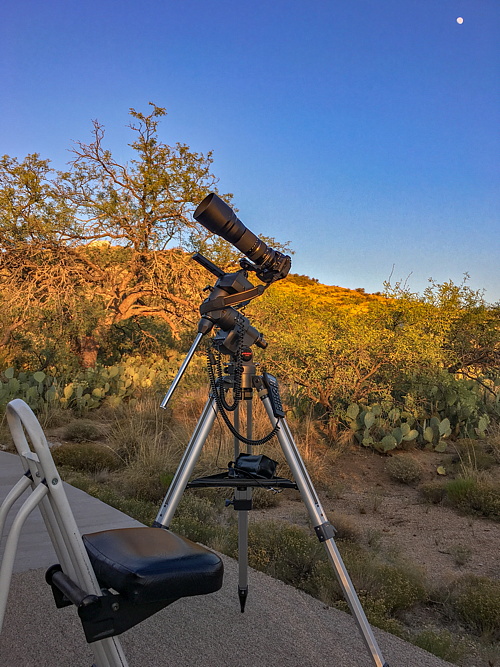
1917 MST: viewed the Moon using the Celestron 12x70 binoculars.
1934 MST: sunset. Calm now. I began searching for Venus and Mercury low in the western sky using the binoculars. 1935 MST: located Venus in the 12x70 binoculars. 1936 MST: Venus was now barely visible to the naked eye (if you knew where to look). 1949 MST: finally saw Mercury with the 12x70 binoculars. 1957 MST: last look at Venus and Mercury, 12x70. Thin clouds low in the western sky prevented seeing Mercury with the naked eye. The planets were slightly more than the Moon's diameter apart. They will be closer together Saturday evening.
2004 MST: LXD55 ON. Did an Easy Align using the AutoStar #497 with the DSLR lens at a focal length of 150mm. GOTO the Moon; it was placed in the DSLR 150mm lens field-of-view. Took this photo (cropped) of the waxing gibbous Moon, f/6.3, 1/400sec, ISO 200, FL 600mm:
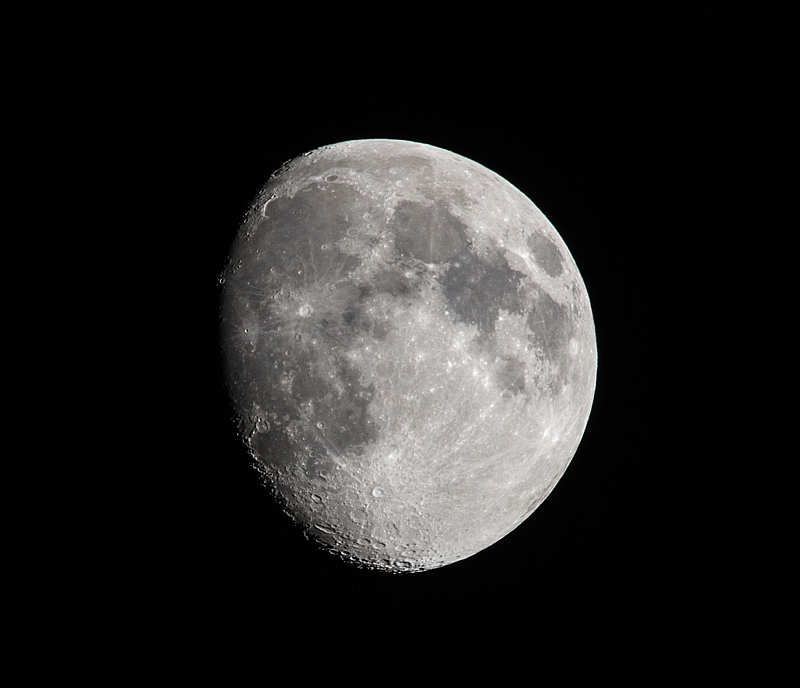
The planet Saturn was just below the Moon, as seen in this merge of two photos taken at f/6.3, 1/200sec (Moon) and 1/10sec (Saturn), ISO 200, FL 360mm:
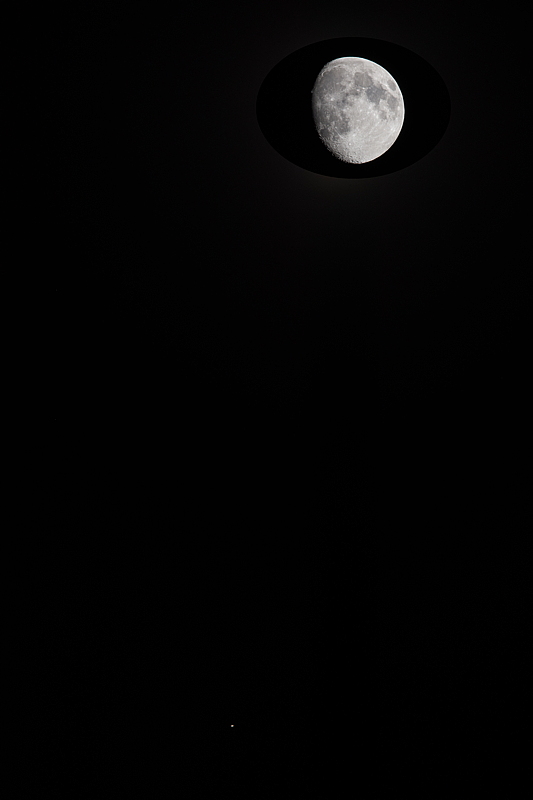
I wondered how well Saturn would come out with the lens at a focal length of 600mm. This cropped image, f/6.3, 1/30sec, ISO 200, FL 600mm, shows the planet and ring system pretty nicely:
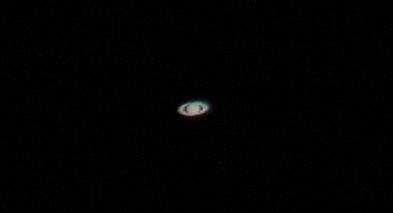
I slewed the camera to the star Vega, centered it at FL 600mm, and SYNCed the AutoStar on it. Then did a GOTO M57 (Ring Nebula). Although the sky was bright from the Moon, this full-frame photo, f/6.3, 20 second exposure, ISO 1600, FL 600mm, shows the Ring Nebula (just right of center):
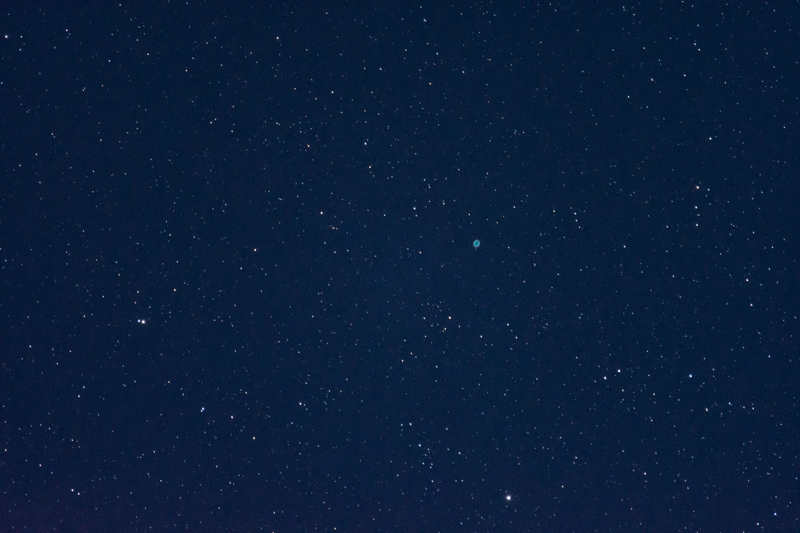
And M13 (Great Globular Cluster in Hercules), full-frame photo, f/6.3, 10 second exposure, ISO 1600, FL 600mm:
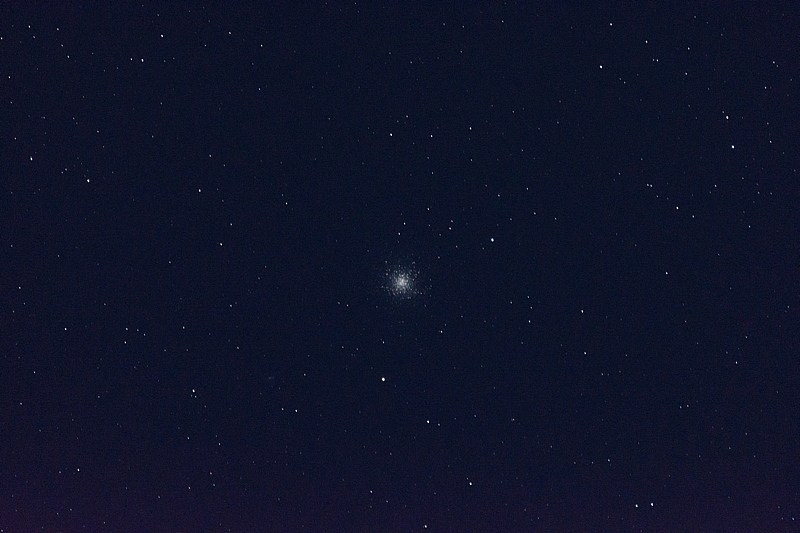
Switched to the Nikon 18-140mm lens and photographed the Summer Triangle, f/3.5, 30 seconds, ISO 1600, FL 18mm:
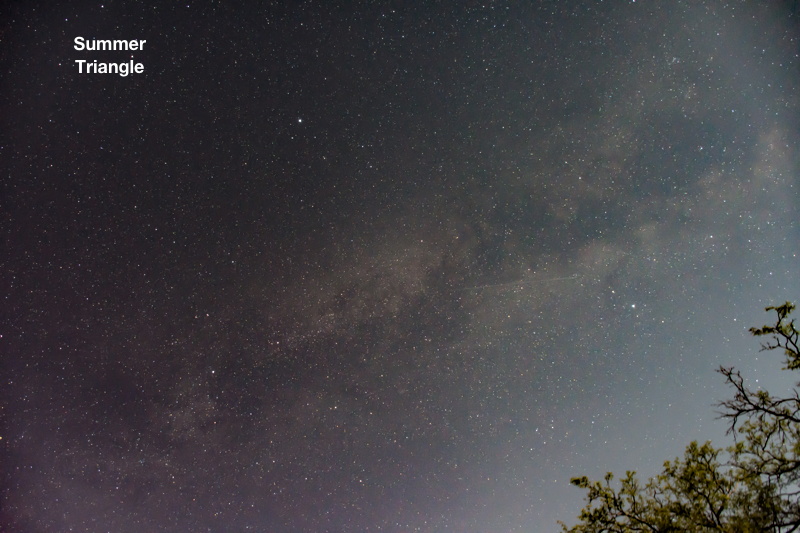
Mouseover or tap on image for star labels
The Milky Way and a faint satellite are visible in the photo even with the bright Moonlit sky.
2056 MST: LXD55 OFF. Ended tests. I will be doing more tests of sky astrophotography using the LXD55 GEM for my upcoming Manfrotto review.
|
Close: Friday, 15 July 2016, 2112 MST Temperature: 81°F |
Session Length: 2h 12m Conditions: Mostly clear |
Comments are welcome using Email. Twitter users can use the button below to tweet this report to your followers. Thanks.
Cassiopeia Observatory Home Page
Copyright ©2016 Michael L. Weasner / mweasner@me.com
URL = http://www.weasner.com/co/Reports/2016/07/16/index.html
